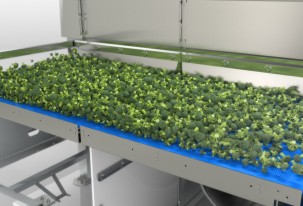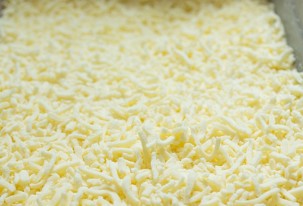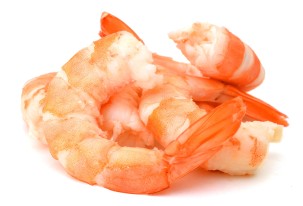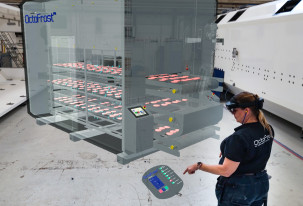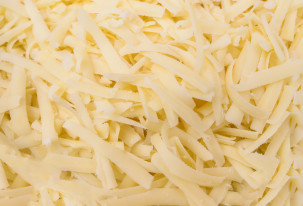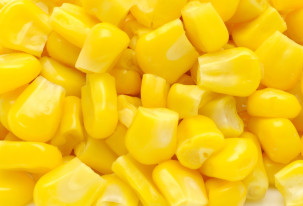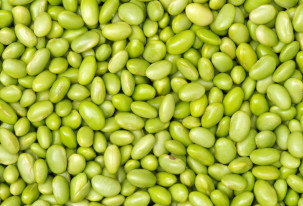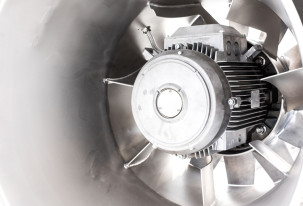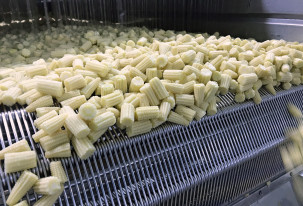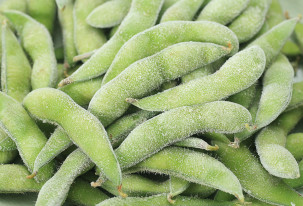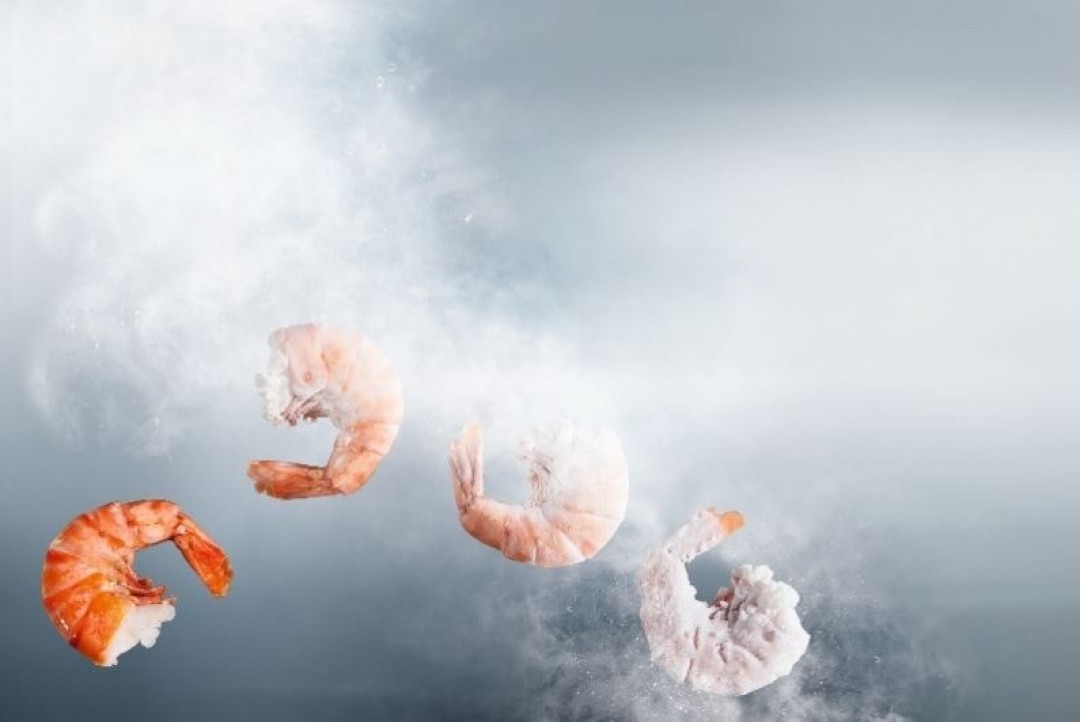
CRYOGENIC FOOD FREEZING VS. IQF FREEZING
In the food manufacturing industry, mechanical freezing is seen as a long established form of freezing technology while the cryogenic technology is seen as a new alternative, especially for low production and varying capacity requirements.
While the principles of mechanical freezing have not changed since it was invented over 100 years ago, the components, materials and operating systems have advanced to the latest design and intelligent system control in order to provide the best food safety, low maintenance and energy efficiency. The modern day high tech mechanical IQF (Individual Quick Freezing) tunnels are proof of this development.
What you need to know about cryogenic freezing of food:
Cryogenic systems reduce temperature through the direct application of a medium, usually carbon dioxide or liquid nitrogen, within an enclosure that contains the food product, while mechanical systems use a re-circulating refrigerant within an air cooler that exchanges heat from air circulating within the freezer to reduce food temperature.
There are 2 main types of cryogenic systems used as an alternative to the IQF systems: spraying and immersion. For the first type, a medium of carbon dioxide or liquid nitrogen is sprayed on the food products that are placed on a belt that goes through the freezer, and it has as an advantage fast freezing result and really low dehydration. Since there is no movement of the food products though, there is a high risk for lump formation and that the products stick to the belt, thus making the belt very difficult to clear. The second type is a highly efficient method. The freezing time is extremely short and dehydration is unbeatable low. Since the products are immersed separately into a bath containing carbon dioxide or liquid nitrogen, there are no weary parts and the freezer is very easy to clean. The disadvantage for the immersion cryogenic method is the very high consumption of refrigerant and dependence on the medium supply.
Fast freezing rate is often seen as one of the main benefits of a cryogenic system together with the freezers small size, while mechanical freezing is said to be slower due to the difference in refrigerant temperature and the big footprint of the freezers is seen as a drawback. Today’s mechanical freezers though, can rival cryogenic systems both in terms of freezing speed and footprint.
What you need to know about the IQF freezing:
The advantage of IQF freezers are the high air velocity impingement systems, capable of extremely quick freezing of small, flat, unpackaged food products such as shrimp, peas, diced meat or diced/sliced fruits and vegetables. The high air velocity is suspending the product in the cold air stream, separately freezing each piece of product without creating lumps.
The associated refrigeration plant for a mechanical freezer can be packaged in a weatherproof housing on a moveable frame. Compare to this, a cryogenic system has fixed pipework and requires a large external gas storage tank.
Flexibility is important to the customer, therefore equipment manufacturers today are no longer building large, fixed systems, but compact modular formats on mobile frames with a small footprint.
Some common disadvantages with cryogenic food freezing:
- ball bearings and belts are subject to significant maintenance due to the cold environment
- high consumption of refrigerant and dependence on the supply of medium
- floors are subject to damage from leaking refrigerant
- leaking nitrogen creates mist or clouds inside the factory, limiting visibility
- long contractual period
In a cryogenic system the product conveyor is a stainless steel belt because of the extreme low temperature of the freezer and thus the belt is always subject to significant maintenance. The advantage of a mechanical system is that the conveyor belt can also be manufactured from food grade low temperature plastic. Plastic provides easier release for wet food products and is easier to clean for improved hygiene. Also, different plastic module belt designs are available for different varieties of food and airflows.
Equipment spotlight: IQF freezer
Cryogenic freezing exponents will generally try to argue that the size and complexity of an IQF freezer requires more manpower to clean the system, but in fact mechanical freezers are often easier to clean due to access for the personal inside and outside the enclosure. Furthermore, automated CIP (Clean in Place) systems have surpassed the need for manual cleaning of the mechanical freezers.
Although little or no capital investment is required for renting a cryogenic system, the high production cost of the liquid gas has a direct impact on the purchase cost of gas for the food manufacturer. The ongoing running costs of a cryogenic freezer can be considerably higher than a IQF freezer and often food manufacturers have no alternative to their gas supplier. Cryogenic freezers have low running costs in terms of energy consumption but the cost of the liquid gas is high and variable. Also, the carbon emissions for liquid gas production is something to consider in terms of environmental cost.
IQF freezing systems have more advantages over a cryogenic system in terms of environmental impact, energy efficiency and running costs. IQF freezers can use natural gases such as ammonia, which is an environmental friendly refrigerant with zero potential for ozone depletion and global warming. In addition, energy consumption can be reduced by fitting optimization technology and special software for controlling the compressor and condenser unit operation.
Even if the capital investment for a cryogenic freezing system is low, the contract normally includes figures for minimum consumption and contractual time. It can take several years to cancel a contract and it needs to be advised one year ahead. A leasing contract for a IQF mechanical freezer will have an end after some years. The average payback period for mechanical freezing is around three to four years, with some product applications achieving payback in less than two years.
Advantages with cryogenic freezing:
- low investment cost
- very low dehydration
The investment cost for a cryogenic system is low since the suppliers supply and rent their equipment for free, but this comes with a monthly cost for the gas tank, thus the food manufacturer is dependent on the gas supply. If the food manufacturer is looking for a short-term, low capacity freezing solution with low capital, then the rental of a cryogenic system is justified. The total cost of the actual gas charge to freeze each kg. of the product should be taken into consideration though. Also, depending on the geography of the food processor, the gas supply might not always be available on a regular basis due to transportation and other logistic factors.
Making an investment in an IQF freezing system makes more sense for companies that are looking for mid to long-term solutions. The flexibility of an IQF mechanical system offers the possibility that in time the freezer can be adapted to suit a wide range of products with adjustments to temperature, airflow, belt mesh and flow configuration. The length of a cryogenic freezing system can be extended to increase capacity but a mechanical system has more manufacturing flexibility.
A strong argument for cryogenic freezing is low dehydration. Cryogenic freezing refers to very rapid freezing achieved by exposing the food products to an extremely cold medium undergoing a change of state. The rate of freezing obtained with cryogenic methods is much greater than that obtained with air-blast or plate freezing but is only moderately greater than that obtained with fluidized bed. Dehydration loss from the product is usually much less than 1%.
Both freezing technologies have pros and cons for the individual manufacturer and these should depend on the food product and the manufacturer’s future goals.
GET IN TOUCH
